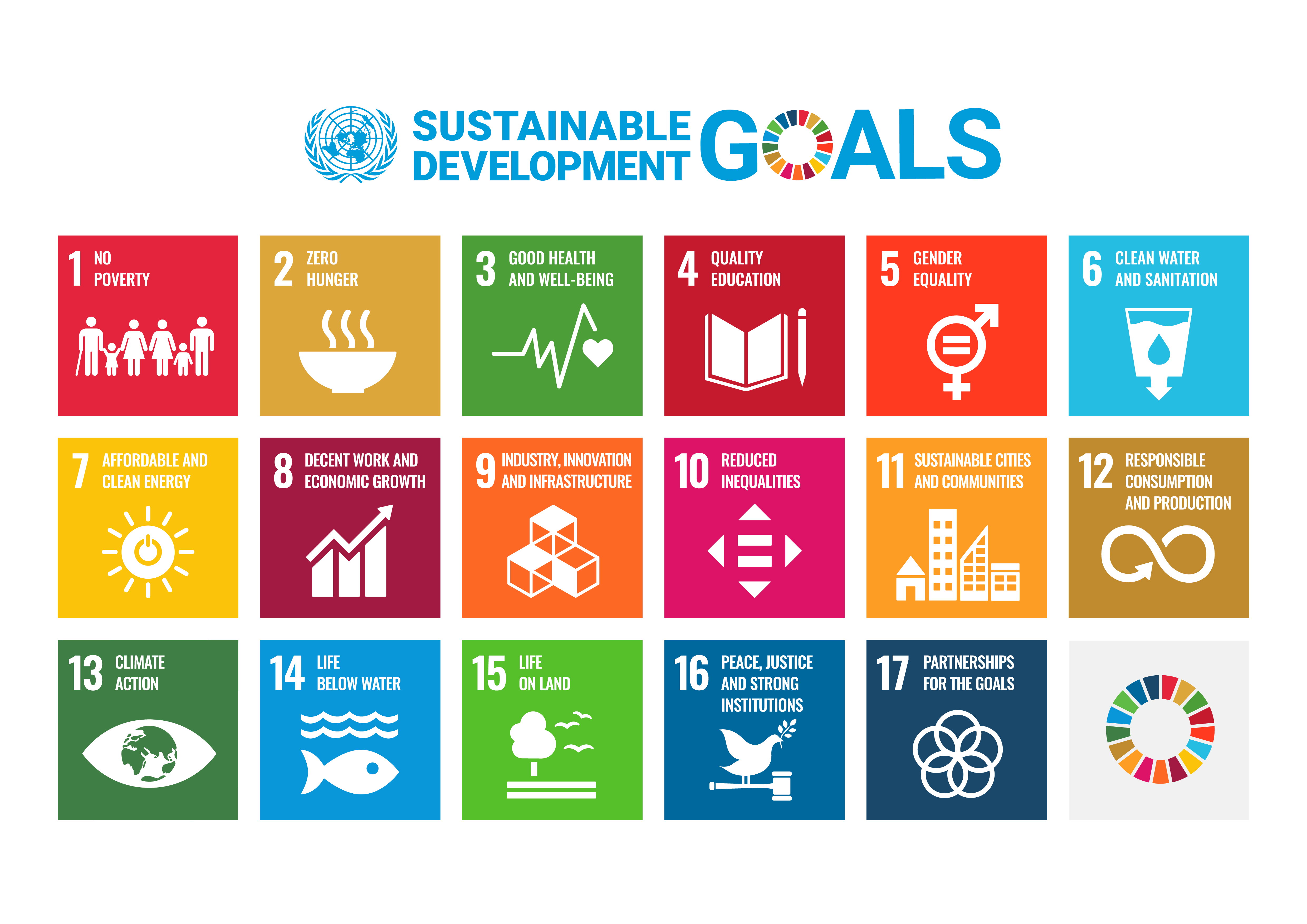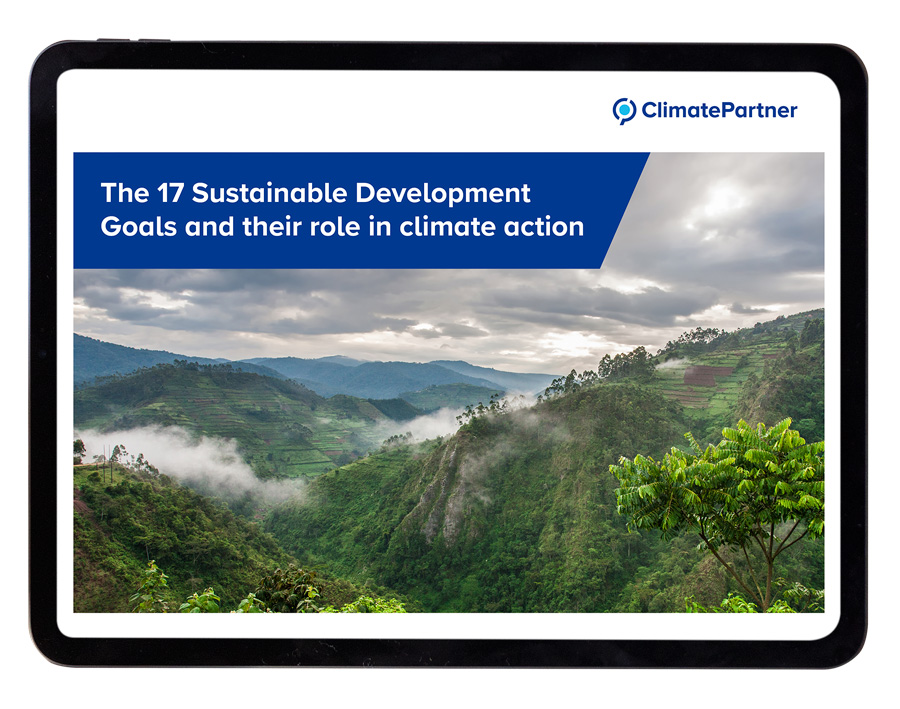What are the 17 United Nations Sustainable Development Goals (SDGs)?
Definition of SDGs
The 17 Sustainable Development Goals of the United Nations (UN) are a roadmap for sustainable global development. They encompass economic, ecological, and social aspects and are part of the 2030 Agenda for Sustainable Development. The goal of this Agenda is to promote global peace and well-being in a sustainable manner. The SDGs are for everyone: governments, civil society, the private sector, science, and every individual. For this reason, countries have been working since 2016 to frame the shared vision in national development plans and fight against issues like poverty and for causes such as equality. It is exceptionally important to focus on the needs of the most vulnerable demographic groups and countries in the process because it will not be possible to accomplish the 17 SDGs by 2030 if anyone is left behind.

An overview of all 17 Sustainable Development Goals (SDGs) of the 2030 Agenda. Source: https://www.un.org/
SDG 1: No poverty
Global poverty can only be brought to a permanent end if there is equal access to decent work, quality education, and medical care, and if people are able to live in peace and safety.
SDG 2: Zero hunger
Global food security requires fundamental change accompanied by strategic subsidies for agriculture and food production.
SDG 3: Good health and well-being
Improved midwifery, efficient technology that makes it possible to cook with clean fuels, transparency about the risks of alcohol, and access to healthcare and sanitation will help save the lives of millions of people.
SDG 4: Quality education
Education not only improves quality of life, but also helps people find innovative solutions. Citizens cannot help to advance their country without access to education.
SDG 5: Gender equality
Equal access to all education, healthcare, and decent work combined with participation in scientific and political decision-making processes foster a sustainable society and way of life.
SDG 6: Clean water and sanitation
Access to clean water and sanitation is a fundamental part of daily hygiene. The management of freshwater ecosystems and sewage systems must be promoted for sources of clean drinking water and safe sewage treatment to become more widespread.
SDG 7: Affordable and clean energy
Every household in the world should have access to electricity by 2030. Energy efficiency is set to improve, and the proportion of renewable energy is set to double at the same time.
SDG 8: Decent work and economic growth
Sustainable economic growth is reliant on decent jobs for the entire global population and economic practices that respect the limits of our planet.
SDG 9: Industry, innovation, and infrastructure
A good life and a productive economy rely on a strong infrastructure. This consists of not only roads, public transport, and rail networks, but also water and energy supplies and communication and information technology.
SDG 10: Reduced inequalities
Political initiatives must prioritise the needs of disadvantaged and marginalised groups to shape economic growth and reduce poverty.
SDG 11: Sustainable cities and communities
Cities are not only economic hubs and centres of innovation, but also a major opportunity for a more sustainable future. At the same time, they are responsible for around 75% of carbon emissions. Futuristic city planning, waste management, and energy strategies are key aspects of making cities and communities sustainable.
SDG 12: Responsible consumption and production
The transformation of entire supply chains into a circular economy will ensure that our planet’s finite resources are used sustainably and left available for future generations to use.
SDG 13: Climate action
Climate change is the most pressing issue of our age and a global challenge that knows no borders. In the Paris Agreement of 2015, the global community committed to greatly minimise global carbon emissions by 2050. States and companies must aim to become climate neutral by then.
SDG 14: Life below water
The oceans are the largest ecosystem on the planet. They provide us with oxygen and food, they influence the weather, and they absorb around one quarter of all carbon emissions. Our quality of life is closely linked with the condition of the oceans, which is why a sustainable future requires that they be treated with care.
SDG 15: Life on land
Our lives depend on healthy ecosystems and biodiversity:
Rainforests convert CO2 to oxygen, moors act as carbon sinks, mangrove forests protect coastlines, alpine forests protect settlements, nutritious foodstuffs grow in healthy soil, and insects pollinate plants that produce the fruit we eat. That is why the protection, restoration, and sustainable use of terrestrial ecosystems are all so important.
SDG 16: Peace, justice, and strong institutions
Inclusive societies rely on a stable legal system, peace, and physical integrity. A sustainable society cannot grow without safe, long-term living conditions, food security, education, healthcare, and participation in societal decisions for all.
SDG 17: Partnerships for the goals
First and foremost, sustainable development is driven by regional, national, and global partnerships, and must be realised within financial, technological, economic, and institutional frameworks. This goes for governments, society, and the private sector alike. In turn, this requires close international collaboration characterised by mutual respect.
